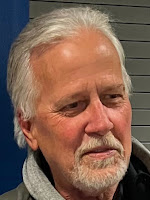The Long Way Home 10.14.2022
We are coming to the end of the Silly Season. Not tourism, which seems eternal this time of year. I’m writing about the biannual election cycle--the Silly Season.
I’m a firm believer in public service and citizen-driven government. I think everyone should step up and run for public office--win or lose. You’ll learn a bunch. From school boards to the legislature we need to have committed, common-sense people stand for election and serve a term or two--more if they actually get it.
To win, a candidate seeking a public office needs two things. Name recognition and party support (except for the non-partisan offices, of course, although there is a fair amount of party influence there, undeclared though it may be.)
In 1992 I stood for election to serve the Minnesota legislature from West Bloomington with the DFL endorsement. I’d seen how the government worked and met enough elected officials to know I was qualified. But I had little name recognition, and party support was, let’s say low-key.
Minnesota does not allow a voter to claim party affiliation when registering to vote. So to find potential voters to support a candidate, consultants look at the party index determined by partisan voting in prior national and statewide elections. In my district, the DFL index was about 30%, which means a no-name candidate like me would need to get all the DFL votes, and half of that 70% who mostly vote Republican. A Herculean task. As a political neophyte, I thought if we worked hard enough we could accomplish that. I was naive.
My opponent, a sitting school board member of the Republican persuasion, had a bit more name recognition, and almost a lock on 70% of the electorate. We had one debate, televised on local cable. Before that debate, the retiring incumbent, a man I’d done business with, told me that if he’d known I wanted to be in the legislature he would have brought me into the Republican party and I would have won. Although he was right, I thought that was a terribly unfair way to elect representatives. I was naive.
Now our mailboxes are swamped with campaign flyers that tell us how good the person who seeks our vote is and sometimes how evil their opponent is. Some issues are identified, but solutions are as rare as hen’s teeth. Lots of fun pictures though.
Candidates and their supporters do get out and knock on doors and call people at dinner time. Nine out of ten times, no one answers the door. With caller id and voicemail, most of the phone calls reach no one.
According to FairVote.org, actual voter turnout in a Presidential election year averages 60% across the country. In the off-year, turnout averages around 40%. Although Minnesota turns out better than average, less than two-thirds of eligible voters will cast a ballot this year. And as the races diminish in prominence from statewide and federal offices to legislative and county board seats the number of votes cast diminishes. Judging by votes cast for elected officials, we are governed by a minority.
As for the silly season, over the last several decades I’ve heard candidates promise to control expenses, cut or keep taxes from rising, fully fund our schools, and make sure the public infrastructure is modernized and secure. Based on the evidence, to believe them is just silly.
Once elected, the well-meaning candidates are welcomed into the bureaucracy. They are overwhelmed trying to grasp all the issues that public officials deal with. They are managed by government-paid staff, shuttled off to endless meetings, and assigned to various agencies and associations where they hear from paid consultants, leaders of activist organizations, and the occasional gadfly with an axe to grind. And then, the fundraising.
Contact with regular folks is almost non-existent, until the next Silly Season.

Comments
Post a Comment